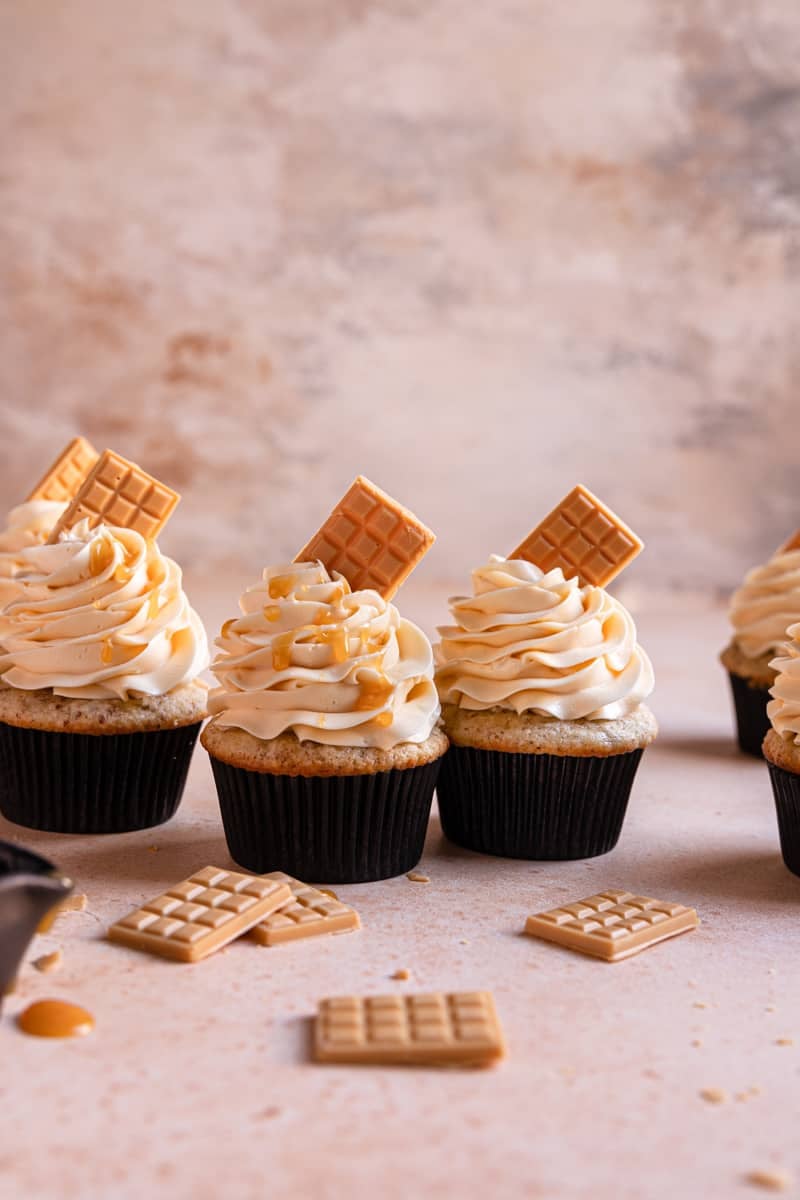Last updated on September 12th, 2023.
High Altitude Baking Adjustments are essential when baking at a higher elevation than sea level.
Unfortunately, there isn’t a simple formula to guide you through the adjustments, but the good news is that it is not as complicated as you might think. And it is more than possible to bake delicious treats at any altitude, no matter how high you are above sea level.
But sometimes, without the proper adjustments, our baked goods might collapse and turn out dry, dense, crumbly, and occasionally oily with a chalky texture. And in this article, I am taking the time to answer all your questions about high-altitude baking: Does high altitude affect baking, and how does it affect your baking? What adjustments should I make, and do I have to?

Before We Start
A while back, I lived in a suburb of Salt Lake City, UT, about 4200 ft above sea level. So I feel confident when I say that not all sea-level recipes require adjustments, and as time goes by, the more you bake, the more you will sharpen your skill, and you will be able to identify when and what type of changes are necessary quickly.
Below I listed different types of baked goods, including how they might be affected at a high altitude and what changes are recommended. Then at the bottom of this article, you will find the high-altitude baking adjustments by ingredients.
How Does High Altitude Effects Our Baking
It is always a great idea to understand how baking works and take a closer look at its science, and it is also relevant to higher elevations baking. Here are the main contributors:
- Air. The closer we get to earth’s atmosphere, the thinner the air we breathe is, and the less pressure it has on our baked goods. This is why, at high elevations, our baked goods expand higher and faster than at sea level, and as a result, causing they to collapse.
- Lower atmospheric pressure. The lower the pressure, the lower the temperature water boils and the longer it takes for our food to cook and baked goods to bake. At sea level, water boils at 212F; with every increase of 500ft, the temperature drops by 1 degree. For example, at an altitude of 10,000, water boils at 192F. Below is a table to demonstrate the changes.
- Humidity, or rather the lack of it. Great for our hair, not so much for our baking. Dry climates also mean dry air and increased evaporations, causing our baked goods to dry out faster and the air to escape faster while leaving large air pockets that sometimes cause the cakes to collapse. This moisture loss will often give us a chalky, dry texture. It might also affect the flavors; since there is less liquid to conduct it, our baked goods might not be as flavorful.
Boiling Point of water chart
| Altitude | Seal level | 3,000-5,000 | 5,000-7,500 | 7500-10,000 | 10,000 |
|---|---|---|---|---|---|
| Water Boiling Point | 212F 100C | 206-200F 96-93C | 202-197F 96-91C | 197-192F 91-88C | 192F 88C |
Baking At High Altitude
Cakes
Most cakes call for two types of aerations: beating air into the batter, either by beating the butter with the sugar or by whipping the eggs and adding a source of chemical leavening such as baking powder. As the cake bakes, gas/steam makes its way into the air bubbles, and they expand. Sometimes they expand so much that the lack of space causes them to break and the cake to collapse. Avoid overbeating the butter and sugar, and only whip the meringue (for angel and sponge cakes) to a medium-soft peak. In addition, consider decreasing the number of chemical cleaners and maybe eliminating the use of baking soda. When baking a high altitude cake, think about reducing the amount of flour and increasing the amount of liquid and eggs might also be necessary.
Cookies
From my experience, when it comes to cookies, almost every sea-level recipe will work just well at a high elevation. But consider making the following changes: increase baking temperature, liquids, and eggs. Decrease bake time, fat, and sugar amounts.
Yeast Breads
Keeping the rise time the recipe calls for is crucial for developing texture and flavor. So to prevent our dough from over-expanding and/or collapsing, consider one or two of the following:
- Reduce the amount of yeast.
- Place the dough in the refrigerator to slow down the rising process.
- Punch the dough 1-2 times during the rising period.
Quick Breads
It might have a bitter flavor coming from the leavening agent; consider reducing the amount of baking powder and/or baking soda.
Custard and cream pie filling
The higher we go in altitude, the lower the boiling point of water. It will not reach the temperature needed for gelatinization, so consider not using a water bath and baking at direct heat.
Pies and Pie Crusts
Pie crusts do not need any high-altitude adjustments. But fruit fillings might take longer to bake, so make sure to use a pie crust cover to prevent it from burning.
Bars
Brownies, blondies, and other types of bars are a bit of a headache at every altitude level and, more often than not, require us to change the oven temperature, baking time, and different adjustments. So when it comes to high altitude baking. You will need to pay close attention if the bars do not set, with add more or increase the baking time. If it is too dry, add more fat and reduce the baking time, maybe even reduce the amount of flour.
High Altitude Ingredients Adjustments chart
The following chart will provide you with the recommended amount to increase or decrease when you want to make adjustments.
| Ingredient | Cause | 3,000 ft | 5,000 ft | 7,500 ft | 10,000 ft |
|---|---|---|---|---|---|
| Baking Temperature | A higher baking temperature will speed the setting processes and minimize the loss of moisture | 15-25F 9-4C | 15-25F 9-4C | 15-25F 9-4C | 15-25F 9-4C |
| Baking Time | Compensates for the higher baking temperature | 5-8 minutes | 5-8 minutes | 5-8 minutes | 5-8 minutes |
| Flour | It is even drier than at sea level and will absorb more moisture | + 1 teaspoon per cup of flour | +2 teaspoons per cup of flour | + 3 teaspoons per cup of flour | + 4 teaspoons per cup of flour |
| Baking powder and baking soda | Increases the amount of gas that expands the air bubbles and causes them to collapse | drop by 1/8 teaspoon | drop by 1/8-1/4 teaspoon | drop by 1/4-1/2 teaspoons | drop by 1/2-2/3 teaspoons |
| Sugar | A dry environment increases the concentration of sugar, creating a brittle texture | drop 0-1 tablespoon per cup | drop 1-2 tablespoons per cup | drop 2-3 tablespoons per cup | drop 3-4 tablespoons per cup |
| Liquid | Evaporates faster, leaving us with dry baked goods | + 1 tablespoon per cup | + 1-2 tablespoons per cup | + 2-4 tablespoons per cup | + 3-4 tablespoons per cup |
Expert Tips
- Instead of adding extra eggs, use extra-large eggs.
- Dutch cocoa powder will enhance flavor and take longer to set. Natural cocoa will fast faster and shortened baking time. You can read all about it in my blog post, Natural vs. Dutch cocoa in baking.
- Practice is critical; it might take a few tries to get a recipe twice. If you are a beginner baker or new to high-altitude baking, check out these High Altitude Baking books, full of high-altitude recipes guaranteed to work. High Altitude Baking , Sugar High.
- The frying temperature should be decreased by 3F per every 1,000 ft.
- When it comes to pans, use the same pans the recipe calls for but fill them 2/3 or maybe 1/2 full. (instead of 3/4 full).
Here Are Some Great Recipes To Start With
Moroccan Peanuts Cookies, Baked Chocolate Donuts, Mini Apple Galette.


Thank you for the tips, guidelines and information on higher altitude baking. I have recently moved to a higher altitude and noticed some of my recipes are just not the same. I knew it affected it, so this is a wonderful reference to have and use!!
I am so glad to hear that this is useful. The learning curve might take some time, but it’s not as complicated as one might think.
Hi Dikla,
My name is Hadas. I have lived in the UK at the past 20 years. I was trained a pastry chef in Manchester, and I absolutely love baking. Even though I’ve tried most British recipes, there is a special in my kitchen for Israeli recipe.
I’ve just found your blog right after purchasing your Baking Science book.
It’s lovely to meet you, and I will keep in touch for sure.
Hadas
Hi Hadas,
Very nice to meet you, and thank you for purchasing my book; I hope you’ll enjoy it.
Looking forward to hearing from you again.